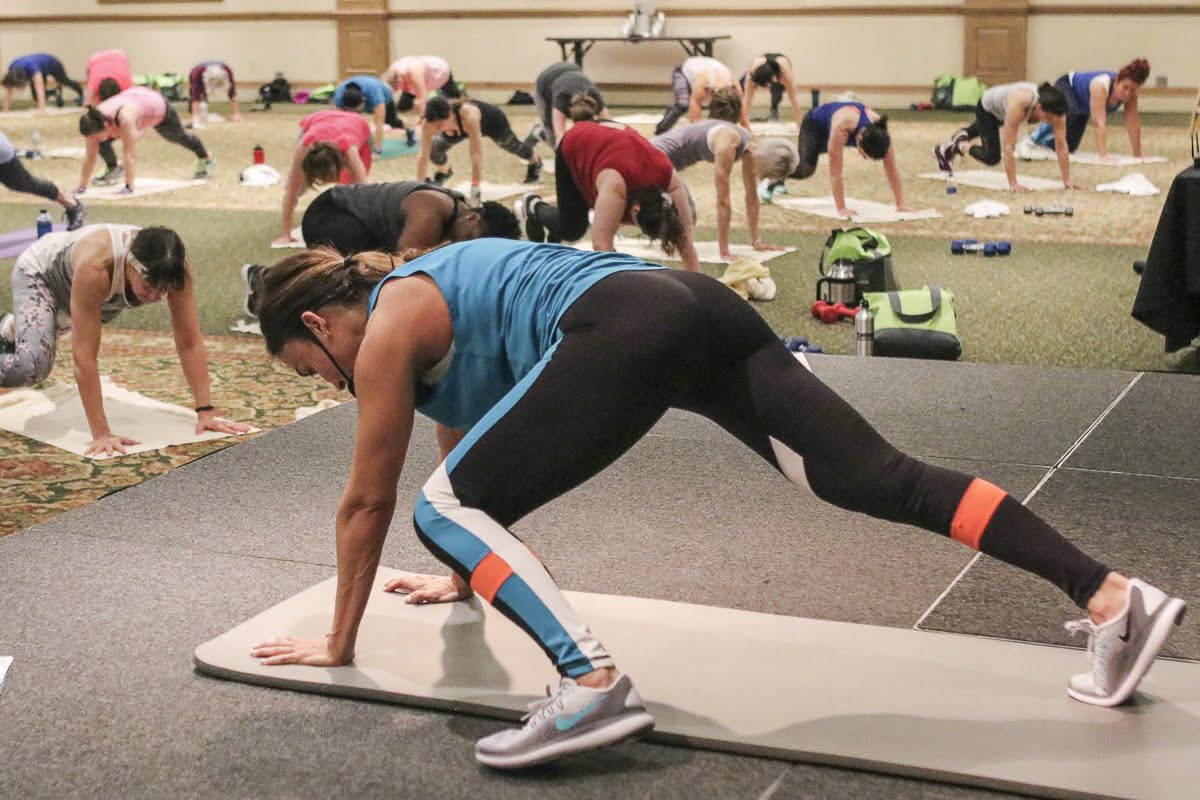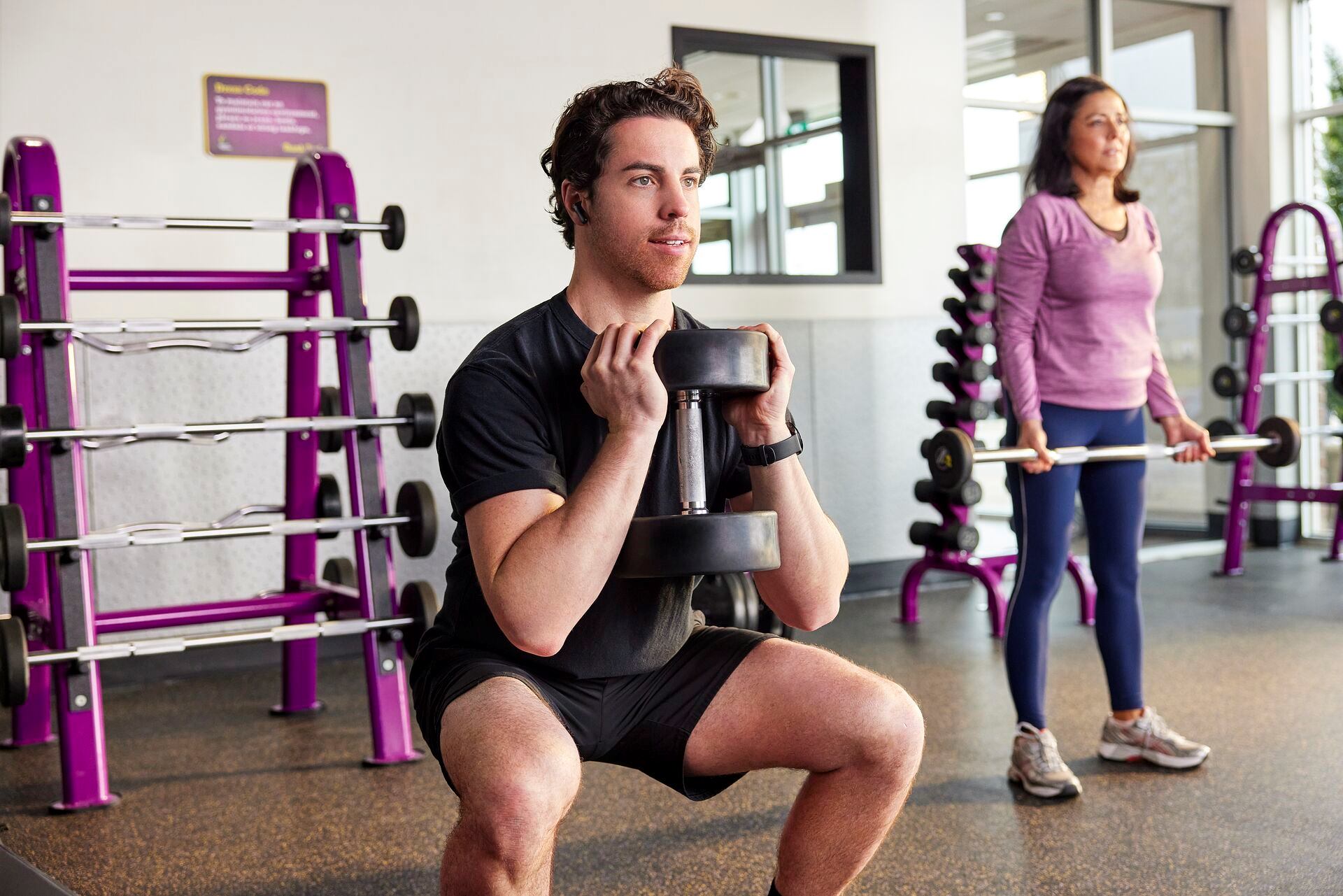

Featured
How To Improve Cardio Endurance Quickly
Modified: January 22, 2024
Discover the best strategies to improve your cardio endurance quickly with our featured tips and techniques. Boost your fitness level and reach new heights in your workouts.
Introduction
Cardiovascular endurance is an important aspect of overall fitness and plays a significant role in maintaining a healthy lifestyle. It refers to the ability of your cardiovascular system to deliver oxygen and nutrients to your muscles as well as remove waste products during prolonged physical activity. Having good cardio endurance not only enhances your athletic performance but also improves your overall health and well-being.
Whether you’re a professional athlete, a weekend warrior, or just someone looking to improve their fitness level, there are various ways to boost your cardiovascular endurance. In this article, we will explore effective strategies that can help you improve your cardio endurance quickly and efficiently.
As with any fitness goal, it’s essential to keep in mind that building cardio endurance takes time and consistency. However, by incorporating certain training techniques, making lifestyle adjustments, and practicing proper breathing, you can significantly improve your cardiovascular fitness.
Before we delve into specific tips and techniques, let’s take a closer look at why cardio endurance is important and how it benefits your overall health.
Understanding Cardio Endurance
Cardio endurance, also known as cardiovascular endurance or aerobic endurance, refers to the ability of your heart, lungs, and blood vessels to efficiently supply oxygen and nutrients to your working muscles during sustained physical activity. It allows you to engage in prolonged exercise without feeling exhausted too quickly.
During cardio exercise, your heart rate increases, and your lungs work harder to supply oxygen-rich blood to your muscles. This sustained effort over time leads to improvements in your heart’s efficiency, lung capacity, and blood flow, ultimately enhancing your overall cardiovascular fitness.
There are several key components that contribute to cardio endurance:
- Heart Strength: A stronger heart is more efficient at pumping blood, delivering oxygen and nutrients to the muscles.
- Lung Capacity: Greater lung capacity allows for increased oxygen intake during exercise.
- Efficient Oxygen Delivery: Cardiovascular endurance improves the network of blood vessels (capillaries) in your muscles, enabling better oxygen delivery.
- Muscle Efficiency: Stronger, more efficient muscles use oxygen more effectively, delaying the onset of fatigue.
By improving your cardio endurance, you’ll experience numerous benefits both in and outside of your workouts. These include:
- Enhanced Stamina: Improved cardio endurance allows you to engage in physical activities for more extended periods without feeling fatigued.
- Increased Energy Levels: Cardio exercises release endorphins, which boost energy levels and improve mood.
- Weight Management: Regular cardio exercise helps burn calories and maintain a healthy body weight.
- Reduced Risk of Chronic Diseases: Studies have shown that maintaining good cardiovascular fitness can lower the risk of heart disease, high blood pressure, and other chronic conditions.
- Better Mental Health: Cardiovascular exercise is known to reduce stress, anxiety, and depression, promoting better mental well-being.
Now that we have a better understanding of what cardio endurance entails and its benefits, let’s explore some effective tips and techniques to help you improve your cardiovascular fitness.
Importance of Cardiovascular Health
Cardiovascular health is crucial for overall well-being and longevity. The cardiovascular system, which includes the heart, blood vessels, and blood, plays a vital role in delivering oxygen, nutrients, and hormones throughout the body. Maintaining a healthy cardiovascular system is essential for optimal functioning of all other bodily systems.
Here are some key reasons why cardiovascular health is important:
- Heart Strength: Regular cardio exercises strengthen the heart muscle, enabling it to pump blood more efficiently. This reduces the risk of heart diseases such as heart attacks, strokes, and heart failure.
- Improved Blood Circulation: Cardio exercises stimulate the growth of new blood vessels, enhancing blood flow and reducing the risk of conditions related to poor circulation, such as hypertension and peripheral artery disease.
- Lowered Cholesterol Levels: Aerobic activities increase HDL (good) cholesterol and decrease LDL (bad) cholesterol, reducing the risk of plaque buildup in the arteries and preventing blockages.
- Regulated Blood Pressure: Regular cardio exercise can help lower high blood pressure, a leading risk factor for heart disease and stroke.
- Weight Management: Incorporating cardiovascular activity into your routine helps burn calories, maintain a healthy weight, and reduce the risk of obesity-related diseases.
- Stress Reduction: Cardio exercise releases endorphins, also known as “feel-good” hormones, which help alleviate stress, anxiety, and depression.
- Enhanced Respiratory Function: Regular cardio workouts improve lung capacity, allowing for better oxygen intake and increased endurance during physical activities.
- Improved Sleep: Engaging in cardio exercise promotes better sleep quality, which is essential for overall health and well-being.
By prioritizing cardiovascular health, you can significantly reduce the risk of heart disease and improve your overall quality of life. It is important to engage in regular cardio activities and adopt a heart-healthy lifestyle to maintain a healthy cardiovascular system.
Tips to Improve Cardio Endurance
Improving your cardio endurance requires a combination of consistent training, proper exercise techniques, and lifestyle adjustments. Here are some effective tips to help you improve your cardiovascular fitness:
- Consistent Cardiovascular Exercise: Engage in aerobic activities such as running, cycling, swimming, or brisk walking regularly. Aim for at least 150 minutes of moderate-intensity cardio exercise or 75 minutes of vigorous-intensity cardio exercise per week.
- HIIT (High-Intensity Interval Training): Incorporate HIIT workouts into your training regimen. These involve short bursts of intense exercise followed by brief recovery periods. HIIT boosts cardiovascular fitness and enhances endurance in a shorter amount of time.
- Incorporating Strength Training: Include strength training exercises in your routine. Building lean muscle mass improves muscular endurance and supports cardiovascular health.
- Proper Breathing Techniques: Practice controlled breathing during your workouts. Breathe in through your nose and exhale through your mouth to maximize oxygen intake and release carbon dioxide effectively.
- Gradually Increasing Exercise Duration: Gradually increase the duration and intensity of your cardio workouts over time. Start with shorter durations and gradually extend your workout sessions to challenge your cardiovascular system.
- Monitoring Heart Rate: Utilize a heart rate monitor or smartwatch to monitor your heart rate during exercise. This helps ensure that you’re working within your target heart rate zone for effective cardiovascular conditioning.
- Including Variety in Your Workouts: Incorporate a mix of different cardio exercises to challenge your body and prevent boredom. Try activities like swimming, dancing, or participating in group fitness classes.
- Taking Rest and Recovery Days: Allow yourself sufficient rest and recovery days to avoid overtraining. Your body needs time to repair and rebuild to improve cardiovascular fitness effectively.
- Maintaining a Balanced Diet: Fuel your body with nutritious foods that support cardiovascular health. Incorporate a variety of fruits, vegetables, whole grains, lean proteins, and healthy fats into your diet.
- Staying Hydrated: Drink an adequate amount of water throughout the day, especially before, during, and after your workouts. Proper hydration is essential for optimal cardiovascular function.
By implementing these tips into your fitness routine and lifestyle, you’ll gradually notice improvements in your cardio endurance. Remember to listen to your body, be consistent, and enjoy the process of improving your cardiovascular fitness.
Consistent Cardiovascular Exercise
Consistent cardiovascular exercise is the foundation for improving your cardio endurance. Engaging in regular aerobic activities helps strengthen your heart, improve lung capacity, and boost overall cardiovascular fitness.
To enhance your cardio endurance, aim for at least 150 minutes of moderate-intensity cardio exercise or 75 minutes of vigorous-intensity cardio exercise per week. This can be achieved through activities such as running, cycling, swimming, dancing, or brisk walking.
When starting or increasing your cardio workouts, it’s important to begin at a comfortable level and gradually progress. If you’re new to exercise, start with shorter durations and lower intensities, then slowly increase the duration or intensity each week. This gradual approach allows your body to adapt to the demands of cardio exercise without overwhelming your cardiovascular system.
Consistency is key. Try to incorporate cardio exercises into your weekly routine and make it a habit. Choose activities that you enjoy, as it will increase your motivation and make it easier to stick with your exercise plan. It may be helpful to schedule your workouts in advance, making them a non-negotiable part of your daily or weekly schedule.
Remember to warm up before each session and cool down afterward to prevent injuries and aid in recovery. A warm-up prepares your body for the physical demands of exercise by increasing your heart rate and loosening your muscles. A cool down helps gradually decrease your heart rate and prevent muscle soreness.
During your cardio workouts, pay attention to how you feel. It’s normal to experience some discomfort and fatigue, but avoid pushing yourself to the point of pain or exhaustion. Listen to your body and adjust the intensity or duration as needed.
Vary your cardio exercises to challenge different muscle groups and prevent boredom. Mix up your workouts by trying different activities or incorporating interval training. This not only keeps things interesting but also helps improve your overall fitness level by engaging different energy systems in your body.
Consistency is key in improving cardio endurance. By making regular cardiovascular exercise a priority and gradually increasing the duration and intensity of your workouts, you’ll witness significant improvements in your cardio fitness over time.
HIIT (High-Intensity Interval Training)
High-Intensity Interval Training (HIIT) is a powerful and efficient method to improve cardio endurance. This training technique involves alternating short bursts of intense exercise with brief recovery periods. HIIT workouts provide a challenging cardiovascular stimulus that can significantly enhance your cardiovascular fitness in a shorter amount of time.
The intensity of HIIT workouts pushes your heart rate to its maximum, resulting in improved cardiovascular capacity and increased calorie burn. The short bursts of high-intensity exercise force your heart and lungs to work harder, promoting adaptations that improve your cardio endurance.
Here’s how to incorporate HIIT into your routine:
- Select a Cardio Exercise: Choose a cardio exercise that you enjoy and can perform at a high intensity. Activities like running, cycling, jumping jacks, or burpees work well for HIIT.
- Warm Up: Begin with a 5 to 10-minute warm-up session to prepare your body for the upcoming intensity. This can involve light cardio exercises and dynamic stretches.
- Work-Interval: Perform an exercise at a high intensity for a designated amount of time, typically ranging from 20 to 60 seconds. Push yourself to your maximum effort during this phase.
- Recovery Interval: Take a short recovery period of about 10 to 30 seconds after each work interval. Use this time to catch your breath and prepare for the next high-intensity bout.
- Repeat: Repeat the work and recovery intervals for a specified number of rounds, typically 5 to 10 rounds, depending on your fitness level and time constraints.
- Cool Down: Conclude your HIIT workout with a 5 to 10-minute cool-down period. This can involve low-intensity cardio exercises and static stretches to gradually lower your heart rate and promote recovery.
HIIT workouts can be customized to fit your fitness level and goals. You can increase the intensity by performing more challenging exercises, increasing the work-interval duration, or reducing the recovery time. As you progress, you may choose to add more rounds to your workout or try advanced variations of HIIT exercises.
Remember to listen to your body during HIIT workouts and adjust the intensity or recovery time if needed. It’s important to maintain proper form and technique to avoid injuries. If you’re new to HIIT, start with shorter work and recovery intervals, gradually building up as your fitness level improves.
HIIT is an excellent way to optimize your cardio workouts and improve cardio endurance. Incorporate HIIT sessions into your routine 1 to 2 times per week, alternating with moderate-intensity steady-state cardio exercises, to achieve optimal results.
Incorporating Strength Training
While cardio exercises are essential for improving cardiovascular endurance, incorporating strength training into your routine can further enhance your overall fitness level.
Strength training exercises help build and maintain lean muscle mass, which plays a crucial role in supporting cardiovascular health. Stronger muscles improve muscular endurance, allowing you to exercise for longer periods without fatiguing as quickly.
Here are some key benefits of incorporating strength training into your fitness regimen:
- Muscle Efficiency: Strength training improves the efficiency of your muscles in using oxygen, delaying the onset of fatigue during cardiovascular exercise.
- Increased Metabolic Rate: Building muscle through strength training elevates your resting metabolic rate, helping you burn more calories throughout the day.
- Better Posture and Stability: Strengthening your muscles, especially those in your core, promotes better posture and stability, reducing the risk of injuries during cardio workouts.
- Bone Health: Strength training helps increase bone density, reducing the risk of osteoporosis and fractures.
- Hormonal Benefits: Resistance training stimulates the release of growth hormone and testosterone, which can enhance muscle growth, improve body composition, and boost overall cardiovascular health.
To incorporate strength training into your routine, focus on exercises that target major muscle groups, such as squats, lunges, deadlifts, push-ups, and pull-ups. You can use free weights, resistance bands, or machines depending on your preferences and equipment availability.
Perform strength training exercises 2 to 3 times per week, allowing at least one day of rest between sessions to give your muscles time to recover and rebuild. Start with lighter weights or resistance and gradually increase as you gain strength and confidence.
Another effective approach is circuit training, where you combine strength exercises with minimal rest periods to maintain an elevated heart rate throughout the workout. This combination of strength and cardiovascular training can enhance both muscular endurance and cardio endurance simultaneously.
Remember to maintain proper form and technique during strength training exercises to prevent injuries. If you’re new to strength training, it may be helpful to work with a certified personal trainer who can guide you and ensure proper execution of exercises.
By incorporating strength training into your fitness routine, you’ll not only improve your cardio endurance but also enjoy the numerous benefits of increased muscle strength and overall fitness.
Proper Breathing Techniques
When it comes to improving cardio endurance, proper breathing techniques play a crucial role. Correct breathing during exercise helps optimize oxygen intake, enhance performance, and prevent fatigue. By understanding and implementing proper breathing techniques, you can maximize the benefits of your cardio workouts.
Here are some essential tips for maintaining proper breathing during cardio exercise:
- Breathe through your nose: When engaging in cardio exercise, try to breathe in through your nose. This allows the air to be filtered, warmed, and moisturized before it reaches your lungs.
- Exhale through your mouth: As you exhale, do so through your mouth in a controlled manner. This helps expel carbon dioxide more effectively and allows for a fuller exhale.
- Match your breathing with your exercise rhythm: Coordinate your breathing with your movement during cardio exercises. For example, during running, inhale for two steps and exhale for two steps to establish a natural breathing rhythm.
- Avoid shallow breathing: Deep diaphragmatic breathing is more efficient than shallow chest breathing. Focus on expanding your belly as you inhale and contracting it as you exhale.
- Use your breath for rhythm and relaxation: In addition to fueling your muscles with oxygen, your breath can serve as a tool to establish a rhythm and help you relax during intense cardio workouts.
- Practice controlled breathing: During strenuous exercise, it’s common for breathing to become rapid and shallow. Try to maintain controlled breathing, focusing on deep inhales and full exhales to maintain optimal oxygen exchange.
- Listen to your body: Pay attention to your breathing patterns and adjust as needed. If you find yourself becoming breathless, slow down, and take a moment to recover. It’s okay to take short breaks to catch your breath during intense workouts.
Proper breathing techniques not only optimize oxygen intake but also help reduce the feeling of exertion and improve your overall exercise experience. By consciously focusing on your breath, you can maintain a sense of control and steadiness during challenging cardio workouts.
It’s important to note that proper breathing techniques may vary depending on the type of exercise you’re performing. For example, swimming may require different breathing patterns compared to running or cycling. Take the time to understand and practice the specific breathing techniques associated with your chosen cardio activity.
Lastly, incorporating mindfulness or meditation practices that emphasize breath awareness can also be beneficial for developing good breathing habits. These practices can help you become more attuned to your breath during exercise, promoting a sense of relaxation and flow.
By incorporating proper breathing techniques into your cardio workouts, you can optimize your oxygen intake, reduce fatigue, and improve your overall cardio endurance.
Gradually Increasing Exercise Duration
Gradually increasing exercise duration is a key strategy in improving cardio endurance. It allows your body to adapt and build endurance over time, preventing overexertion and reducing the risk of injury.
When starting or progressing in your cardio workouts, it’s important to begin at a level that is challenging but still manageable for you. This may mean starting with shorter durations and gradually increasing the length of your workouts as your fitness level improves.
The principle of progressive overload applies to cardio endurance training. By consistently challenging your cardiovascular system with longer exercise durations over time, you stimulate adaptations that enhance your endurance capabilities.
Here are some tips for gradually increasing exercise duration:
- Set realistic goals: Determine how much time you can dedicate to your workouts and set achievable goals for increasing your exercise duration.
- Incremental increases: Increase your exercise duration incrementally, such as adding 5 minutes each week to your workouts. This gradual approach allows your body to adapt without overloading your cardiovascular system.
- Mix up your workouts: Vary your exercise routines to prevent boredom and accommodate longer durations. Incorporate different cardio activities or change your routes to keep things interesting.
- Listen to your body: Pay attention to signs of fatigue or excessive strain. If you feel overly fatigued during a workout or experience any pain, take a break or reduce the duration to avoid overexertion.
- Monitor your progress: Keep track of your workout durations and note any improvements over time. Celebrate your milestones and use them as motivation to continue pushing yourself.
- Balance rest and recovery: Allow your body sufficient time to rest and recover between workouts. This is when your body adapts and becomes stronger. Include light active recovery days or rest days to avoid overtraining.
- List variability: Mix shorter, high-intensity workouts with longer, moderate-intensity sessions to challenge your cardiovascular system in different ways and improve overall endurance.
Remember that everyone progresses at their own pace, so be patient with yourself. Stay consistent with your workouts and focus on gradual improvements rather than comparing yourself to others.
Gradually increasing exercise duration not only helps build cardio endurance but also boosts confidence and mental resilience. Pushing your limits gradually and achieving longer durations will leave you feeling accomplished and motivated to continue improving.
Monitoring Heart Rate
Monitoring your heart rate during cardio exercise is an effective way to gauge and optimize your cardiovascular endurance. By understanding and staying within your target heart rate zone, you can ensure that you’re getting the most out of your workouts and safely pushing your cardiovascular limits.
Your target heart rate zone is the range of heartbeats per minute at which you should aim to exercise to maximize the benefits of cardio endurance training. This zone is typically calculated based on your age and fitness level.
Here’s how to effectively monitor your heart rate during cardio workouts:
- Determine your maximum heart rate: Subtract your age from 220 to get an estimated maximum heart rate. This serves as a reference point for calculating your target heart rate zone.
- Find your target heart rate zone: Your target heart rate range will depend on the intensity level you want to exercise at. Moderate-intensity cardio is typically around 50-70% of your maximum heart rate, while high-intensity cardio may be around 70-85%.
- Use a heart rate monitor: Invest in a heart rate monitor or utilize the heart rate monitoring feature on fitness trackers or smartwatches. These devices provide real-time feedback, allowing you to adjust the intensity of your workout based on your heart rate.
- Check your heart rate during exercise: Pause momentarily during your workout to check your heart rate. If it’s too low, you may want to increase the intensity to reach your target heart rate zone. If it’s too high, consider reducing the intensity or taking a short break to bring it back down.
- Experiment with different intensities: Pay attention to how you feel at various heart rate levels. Experiment with different intensities to find the sweet spot that challenges you without causing excessive strain or discomfort.
- Track and analyze your data: Keep a record of your heart rate readings during different workouts. This can help you track progress over time and make adjustments as needed.
Monitoring your heart rate during cardio exercise allows you to gauge your effort level and ensure that you’re working within the appropriate intensity range. It helps prevent undertraining or overexertion, optimizing the effectiveness of your workouts and improving your cardio endurance over time.
However, it’s important to note that heart rate is just one tool to guide your workouts. It’s essential to listen to your body and consider other factors such as perceived exertion and overall comfort during exercise.
Using heart rate as a guide, along with listening to your body’s cues, provides a comprehensive understanding of your cardiovascular fitness level and helps you make informed decisions about the intensity and duration of your cardio workouts.
Including Variety in Your Workouts
When it comes to improving cardio endurance, incorporating variety into your workouts is key. Doing the same type of exercise consistently can lead to plateaus and diminish the effectiveness of your training. By adding variety to your routine, you can challenge your cardiovascular system in new ways, prevent boredom, and continue making progress towards your goals.
Here are some reasons why including variety in your workouts is beneficial:
- Muscle Engagement: Different exercises engage different muscle groups, leading to more balanced overall fitness and improved muscle efficiency.
- Cardiovascular Adaptation: Mixing up your workouts forces your cardiovascular system to adapt to new challenges, enhancing your endurance and aerobic capacity.
- Mental Stimulation: Variety in your workouts keeps things interesting and prevents workout boredom, helping you stay motivated and committed to your fitness routine.
- Injury Prevention: Repeatedly performing the same exercises can put excessive stress on specific muscles and joints. Adding variety reduces the risk of overuse injuries and promotes overall body strength and mobility.
- Improved Overall Fitness: Including activities like HIIT, cycling, swimming, running, or group fitness classes in your routine targets different energy systems and challenges your body in different ways, leading to more comprehensive fitness development.
Here are some ways to incorporate variety into your cardio workouts:
- Try new exercises: Experiment with different forms of cardio, such as swimming, dancing, kickboxing, or rowing. Explore activities that align with your interests and make your workouts enjoyable.
- Change your workout environment: Switch up where you exercise. If you usually run outdoors, try finding new routes or hit the gym for a change. Alternating between indoor and outdoor activities provides a fresh perspective and challenges your body in different ways.
- Join group fitness classes: Participate in group fitness classes that incorporate varied movements and exercises. This not only adds variety but also provides a social component and extra motivation.
- Incorporate interval training: Include high-intensity interval training (HIIT) and steady-state cardio sessions in your routine. This combination challenges your body in different ways, ensuring well-rounded cardiovascular development.
- Alternate between cardio and strength workouts: Integrate strength training and cardio workouts on different days. This not only adds variety but also promotes overall fitness and helps prevent muscle imbalances.
- Change the intensity or duration: Vary the intensity and duration of your workouts. Some days focus on shorter high-intensity sessions, while other days opt for longer moderate-intensity workouts.
Remember, variety doesn’t necessarily mean completely changing your routine every day. It can be as simple as alternating between different activities, adjusting intensity levels, or exploring different environments. The key is to challenge your body in new ways and keep your workouts exciting and engaging.
By incorporating variety into your cardio workouts, you’ll not only improve your endurance but also enjoy the benefits of increased motivation, improved overall fitness, and reduced risk of repetitive strain injuries.
Taking Rest and Recovery Days
Rest and recovery days are essential components of improving cardio endurance and overall fitness. Many people mistakenly believe that more exercise equals more progress, but in reality, allowing your body time to rest and recover is just as important as the workouts themselves.
Rest days give your muscles and cardiovascular system the opportunity to repair and rebuild, helping you avoid overtraining and reducing the risk of injuries. Here’s why taking rest and recovery days is crucial:
- Muscle Repair: During exercise, small tears occur in muscle fibers. Rest days provide the necessary time for these micro-tears to heal, allowing your muscles to become stronger and more resilient.
- Energy Replenishment: Intense exercise depletes glycogen stores and places stress on your body’s energy systems. Rest days allow your body to replenish energy stores, optimizing your performance for future workouts.
- Prevention of overuse injuries: Continuous high-impact exercise without rest can lead to overuse injuries such as stress fractures, tendonitis, and muscle strains. Adequate rest helps prevent these injuries by giving your body time to recover and adapt.
- Psychological benefits: Rest days provide mental rejuvenation and prevent burnout. Taking time away from intense workouts allows you to recharge, reduce stress, and maintain a positive mindset towards training.
- Improved performance: Incorporating regular rest and recovery days into your training program allows your body to adapt and become stronger, enhancing your overall performance and endurance.
When planning rest and recovery days, consider the following guidelines:
- Frequency and timing: Aim for at least one or two rest days per week. These days should be strategically placed to allow for recovery after intense workouts or higher volume training periods.
- Active recovery: On rest days, engage in light activities such as gentle stretching, walking, or yoga. This promotes blood circulation, helps flush out toxins, and improves muscle mobility and flexibility.
- Listen to your body: Pay attention to signs of fatigue, excessive soreness, or decreased performance. If you feel overly tired or experience pain, it’s a sign that your body needs rest.
- Quality sleep: Prioritize getting enough sleep each night as it is a critical component of recovery. Aim for 7-9 hours of quality sleep to support optimal recovery and overall performance.
- Proper nutrition and hydration: Fuel your body with nutritious foods and stay hydrated, as these factors play a vital role in the recovery process.
- Active scheduling and planning: Plan your training schedule in a way that incorporates rest days after intense workouts or long training sessions. This helps give your body adequate time to repair and rebuild.
Remember that rest days are not a sign of weakness but rather a vital component of a well-rounded and effective fitness routine. By giving your body the time it needs to rest and recover, you’ll optimize your performance, reduce the risk of injuries, and improve your overall cardio endurance over the long term.
Maintaining a Balanced Diet
When it comes to improving cardiovascular endurance, maintaining a balanced diet is essential. Proper nutrition provides the fuel, nutrients, and energy necessary to support your workouts, aid in recovery, and optimize your overall performance. Adopting a balanced diet can make a significant difference in your cardiovascular health and endurance.
Here are some key dietary guidelines to enhance cardiovascular endurance:
- Include a variety of nutrient-rich foods: Aim for a well-rounded diet that includes fruits, vegetables, whole grains, lean proteins, and healthy fats. These foods provide the necessary vitamins, minerals, and antioxidants to support overall health and cardiovascular function.
- Opt for complex carbohydrates: Complex carbohydrates such as whole grains, legumes, and starchy vegetables provide sustained energy for your workouts. They release glucose slowly into your bloodstream, helping maintain stable blood sugar levels and avoiding energy dips during exercise.
- Prioritize lean proteins: Protein is crucial for muscle repair and growth. Include lean sources of protein such as poultry, fish, lean meats, tofu, legumes, and low-fat dairy products to support muscle recovery after workouts.
- Incorporate heart-healthy fats: Include sources of healthy fats like avocados, nuts, seeds, oily fish, and olive oil. These fats provide essential fatty acids that support cardiovascular health and help reduce inflammation in the body.
- Stay hydrated: Drink an adequate amount of water throughout the day to support proper hydration. Water is necessary for optimal cardiovascular function, and dehydration can negatively impact your endurance and performance.
- Limit processed foods and added sugars: Highly processed foods and added sugars offer little nutritional value and can negatively affect your cardiovascular health. Aim to minimize your intake of sugary snacks, sugary beverages, and processed foods.
- Monitor portion sizes: Be mindful of portion sizes to maintain a healthy weight and avoid overeating. Balancing your calorie intake with your physical activity level is important for achieving and maintaining cardiovascular health.
- Eat pre- and post-workout meals: Consume a balanced meal or snack before your workouts to provide energy and prevent muscle breakdown. After exercise, prioritize consuming a combination of protein and carbohydrates to support muscle recovery and replenish energy stores.
- Consult with a registered dietitian: For personalized dietary advice tailored to your specific needs and goals, consider consulting with a registered dietitian who specializes in sports nutrition.
Remember, a balanced diet is not about strict rules or deprivation but about nourishing your body with the right nutrients to optimize performance and improve cardiovascular endurance. Making sustainable changes to your eating habits and adopting a long-term approach to nutrition will yield the best results.
Pairing your consistent cardio workouts with a balanced diet will provide the foundation for improved cardiovascular endurance, overall health, and well-being.
Staying Hydrated
When it comes to improving cardio endurance, staying hydrated is essential. Proper hydration supports the optimal functioning of your cardiovascular system, helps regulate body temperature, and ensures efficient delivery of nutrients to your muscles during exercise. Being properly hydrated can greatly enhance your performance, endurance, and overall exercise experience.
Here are some key reasons why staying hydrated is important for improving cardiovascular endurance:
- Improved Blood Volume: Adequate hydration helps maintain optimal blood volume, ensuring that your heart can efficiently pump oxygenated blood to your working muscles.
- Optimal Nutrient Delivery: Staying hydrated allows for proper delivery of nutrients to your muscles, which is crucial for energy production and endurance during exercise.
- Temperature Regulation: Sweating is a natural cooling mechanism for your body during exercise. Proper hydration helps maintain a stable body temperature, preventing overheating and reducing the risk of heat-related illnesses.
- Muscle Function and Recovery: Being well-hydrated supports muscle function, reducing the risk of cramps and promoting faster recovery post-workout.
- Mental Focus and Performance: Dehydration can negatively impact cognitive function and lead to reduced concentration and diminished athletic performance.
- Prevention of Fatigue: When dehydrated, your heart has to work harder to pump blood, leading to increased exertion and earlier fatigue during exercise.
To stay properly hydrated and optimize your cardiovascular endurance, consider the following guidelines:
- Drink Water Regularly: Drink water throughout the day, not just during workouts. Aim for at least 8 cups (64 ounces) of water daily, adjusting based on activity level, climate, and individual needs.
- Hydrate Before Exercise: Drink water before your workout to ensure adequate hydration levels. Aim to consume 16-20 ounces of water 2-3 hours before exercise, and an additional 8-10 ounces 10-20 minutes prior to starting.
- During Exercise: Drink water consistently during your workouts to replace the fluids lost through sweat. Sip water every 15-20 minutes, especially during intense or prolonged exercise.
- Consider Electrolyte Balance: For workouts lasting longer than one hour or in high heat, consider consuming a sports drink or supplementing with electrolytes to replace both fluids and essential minerals lost through sweat.
- Monitor Urine Color: Pay attention to the color of your urine as an indicator of hydration. Aim for a pale, yellow color, similar to the color of lemonade.
- Post-Workout Hydration: Rehydrate after your workout to replace fluids lost during exercise. Drink water and consume foods with high water content, such as fruits and vegetables.
Keep in mind that individual hydration needs may vary based on factors such as body size, activity level, climate, and personal sweat rate. Listen to your body’s thirst cues and adjust your fluid intake accordingly.
Remember that prevention is key when it comes to dehydration. Stay hydrated not only during exercise but also throughout your daily activities to support optimal cardiovascular health, enhance performance, and improve your overall cardio endurance.
Conclusion
Improving cardiovascular endurance is a worthwhile goal that can have numerous benefits for your overall health and fitness. By implementing the tips and strategies outlined in this article, you can make significant progress in boosting your cardio endurance and achieving your fitness goals.
Consistent cardiovascular exercise, such as running, swimming, or cycling, forms the foundation for improving cardio endurance. Incorporating HIIT workouts adds intensity and variety to your training routine, pushing your cardiovascular system to new limits. Strength training exercises support muscular endurance and overall cardiovascular health.
Proper breathing techniques optimize oxygen intake and enhance your performance during cardio workouts. Gradually increasing exercise duration challenges your body and promotes endurance gains over time.
Monitoring your heart rate helps ensure that you’re working within your target heart rate zone, maximizing the benefits of your cardio workouts. Including variety in your workouts keeps things exciting, challenges different muscle groups, and prevents plateaus.
Taking rest and recovery days is crucial for allowing your body to repair and rebuild, preventing overtraining and reducing the risk of injuries. Maintaining a balanced diet, staying hydrated, and fueling your body with the right nutrients are key components of improving cardiovascular endurance.
Remember, improving cardio endurance takes dedication, consistency, and patience. It’s a journey that requires adapting and finding what works best for your body. By implementing these strategies and making them a part of your lifestyle, you’ll be well on your way to achieving your fitness goals and enjoying the countless benefits of improved cardiovascular endurance.








